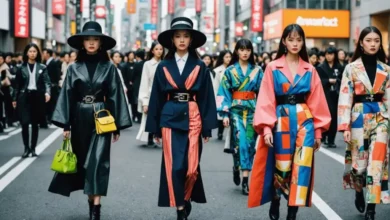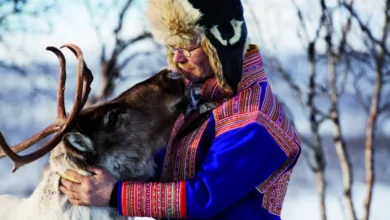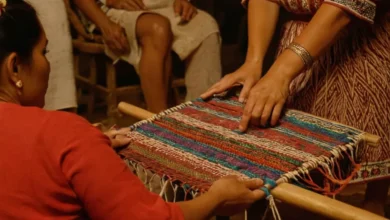Imagine a dress that tells a story—a story of ancient kingdoms, skilled hands, and unshakable pride. This is the Habesha Kemis, a stunning ankle-length gown worn by women in Ethiopia and Eritrea. More than just clothing, the Kemis is a living symbol of culture, faith, and identity.
With its delicate embroidery, flowing silhouette, and deep-rooted history, it’s no wonder this dress has captivated hearts for centuries. Let’s unravel the beauty of the Habesha Kemis, one thread at a time.

What is the Habesha Kemis?
The Habesha Kemis is a traditional white cotton dress, often adorned with colorful hand-stitched patterns along its edges, sleeves, and neckline. Its name comes from the term Habesha, which refers to the people and cultures of the Ethiopian and Eritrean highlands. Simple yet elegant, the Kemis is designed to be modest, with long sleeves, a high neck, and a fitted waist that flows into a graceful ankle-length skirt.

But what makes it truly special is the embroidery. Known as tilfi or tibeb, these intricate designs transform the dress into a wearable work of art.
See also Sherpa People: Guardians of the Himalayas, Keepers of Courage and Culture
Sherpa People: Guardians of the Himalayas, Keepers of Courage and CultureA Journey Through Time: The History of the Kemis
The Kemis has roots stretching back over 2,000 years to the Axumite Empire, a powerful kingdom that thrived in the Horn of Africa. Ancient carvings and religious texts from this era show women wearing draped garments similar to today’s Kemis.
When Christianity arrived in Ethiopia in the 4th century, the Kemis evolved to reflect religious values of modesty and purity. Over time, it absorbed influences from trade routes linking Africa to the Middle East and India, blending foreign dyes and stitching techniques with local traditions. Despite these changes, the Kemis remained a steadfast emblem of Habesha identity.
How is a Habesha Kemis Made?
Creating a Kemis is a labor of love, involving skilled artisans and time-honored techniques:

The Fabric:
The base is shemma, a handwoven cotton fabric. Artisans spin cotton threads on traditional looms, a process that can take weeks. The result is a breathable, lightweight cloth perfect for Ethiopia’s climate.
 The Basque people: Cultural resistance between Spain and France
The Basque people: Cultural resistance between Spain and FranceThe Embroidery:
Using silk or cotton threads, craftsmen and women stitch patterns by hand. Common motifs include:
- Crosses: Symbolizing Ethiopia’s deep Orthodox Christian faith.
- Geometric shapes: Representing unity and balance.
- Floral vines: Celebrating nature and growth.
The colors—vivid reds, yellows, greens, and blues—often mirror the Ethiopian flag, weaving national pride into every stitch.
The Final Touch:
The dress is tailored to fit gracefully, with careful attention to the neckline (often V-shaped) and sleeves. A Netela, a sheer white shawl with colored borders, is draped over the shoulders to complete the look.
When is the Kemis Worn?
The Kemis is versatile, transitioning seamlessly from daily life to grand celebrations:
- Everyday Wear: In rural villages, women wear simpler Kemis for farming, cooking, and caring for families.
- Religious Ceremonies: During holidays like Timket (Epiphany) or Meskel (Finding of the True Cross), women don spotless white Kemis to church, embodying purity and devotion.
- Weddings: Brides shine in dazzling Kemis gowns embroidered with gold or silver threads, symbolizing hope and prosperity.
- Funerals: Plain white Kemis without embroidery are worn as a sign of respect and mourning.
The Kemis in Modern Times: Tradition Meets Trend

Today, the Habesha Kemis is not just a relic of the past—it’s a fashion statement. Designers are reinventing it for the 21st century:
- Global Runways: Ethiopian labels like Mafi and Yefikir Design mix traditional embroidery with modern cuts, creating crop tops, jackets, and even bridal gowns.
- Celebrity Love: Hollywood stars like Ruth Negga and Danai Gurira have worn the Kemis on red carpets, celebrating its beauty.
- Social Media: On TikTok and Instagram, young Habesha women showcase their Kemis styles, pairing them with sneakers or statement jewelry for a fresh twist.
Yet, even with these innovations, the soul of the Kemis remains unchanged.

Why the Kemis Matters: More Than Just a Dress
The Habesha Kemis is a badge of identity. For Ethiopians and Eritreans, wearing it is a way to honor ancestors, celebrate culture, and stand tall in a globalized world. During political movements, like the #NoMore protests in Ethiopia, women have worn the Kemis as a symbol of resistance and unity.
For the diaspora, the Kemis is a cherished connection to home. At family gatherings, festivals, or even college graduations, slipping into a Kemis feels like wrapping oneself in heritage.
Challenges and Hope for the Future


While the Kemis remains beloved, it faces challenges:
- Imitations: Cheap, machine-made copies threaten the livelihoods of traditional weavers.
- Fading Skills: Fewer young people are learning hand-weaving and embroidery.
But there’s hope! Organizations like Sabahar in Addis Ababa train artisans and promote fair-trade practices. Social media campaigns like #HabeshaFashion also help preserve and popularize the craft.
How to Style a Habesha Kemis
Want to wear one? Here’s how:
- Keep it Classic: Pair a white Kemis with a Netela shawl and silver jewelry for weddings or church.
- Go Bold: Choose a Kemis with bright embroidery and match it with colorful beaded necklaces.
- Modern Mix: Layer a embroidered Kemis jacket over jeans, or wear a shorter Kemis with ankle boots.
Final Thoughts: A Dress That Weaves Generations Together
The Habesha Kemis is like a family heirloom—passed down through generations, yet always evolving. It carries the whispers of ancient weavers, the prayers of grandmothers, and the dreams of young girls. Whether worn in a bustling market in Addis Ababa, a quiet village in Eritrea, or a chic apartment in New York, it remains a timeless reminder of where we come from and who we are.

In the words of an Ethiopian proverb:
“A spider’s web may look delicate, but it is woven with patience and purpose.”
So too is the Habesha Kemis—a masterpiece of resilience, beauty, and love.
Want to see the Kemis in action? Search for “Habesha Kemis dance” on YouTube, and let the colors and rhythms sweep you away!




